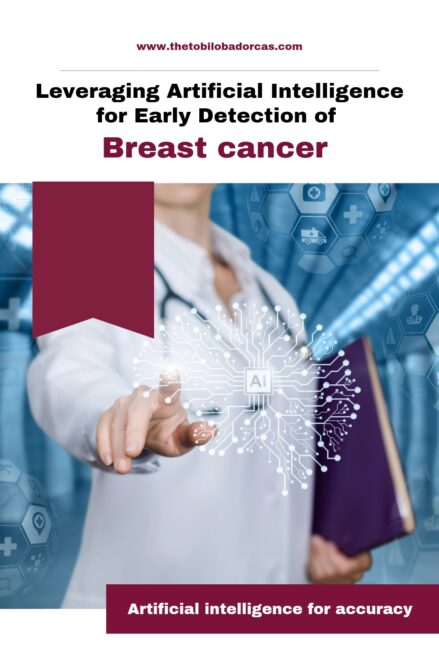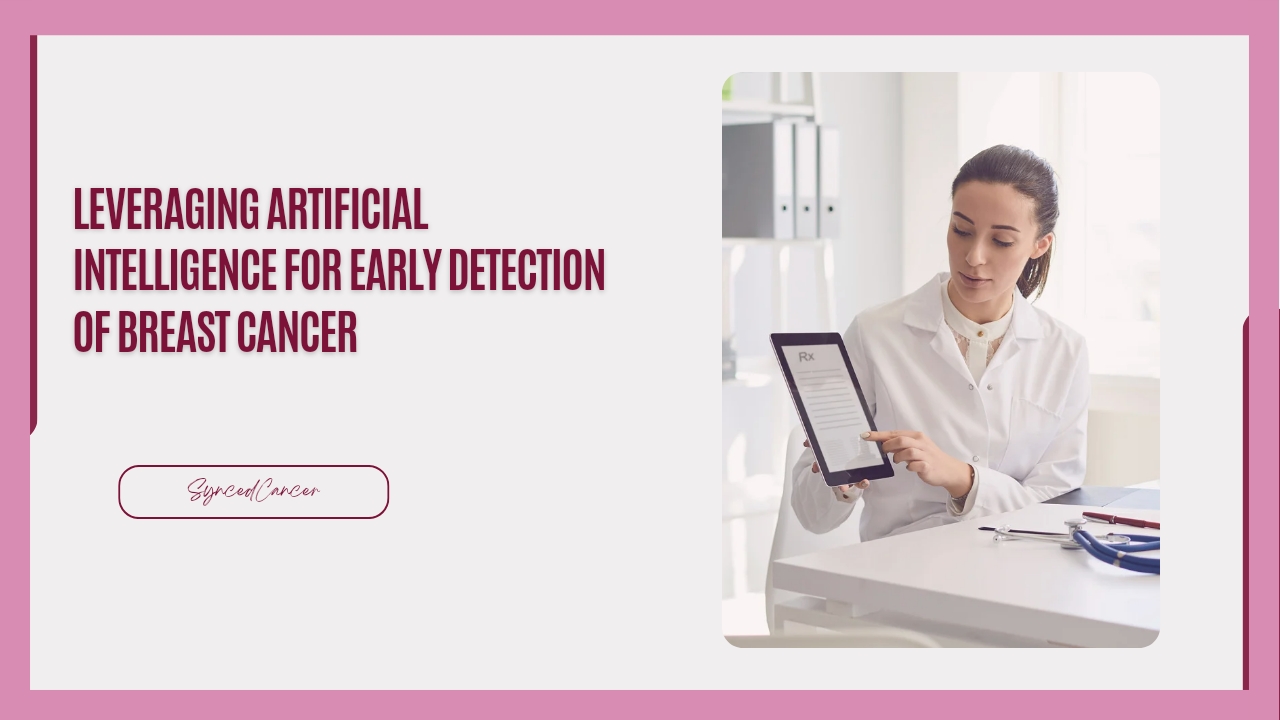Breast cancer remains one of the most common cancers affecting women worldwide, with early detection being crucial for effective treatment and improved survival rates. As medical science progresses, so does the potential for new technologies to enhance healthcare outcomes. Among these, artificial intelligence (AI) stands out as a transformative tool in the early detection of breast cancer, offering unprecedented accuracy, efficiency, and accessibility. This delves into the ways AI is revolutionizing breast cancer detection, the underlying technologies, current applications, benefits, challenges, and future prospects.
The Role of AI in Breast Cancer Detection
Artificial intelligence, particularly machine learning (ML) and deep learning (DL), has shown immense promise in medical imaging and diagnostics. These AI technologies are designed to analyze vast amounts of data, identify patterns, and make predictions with high precision. In the context of breast cancer, artificial intelligence systems are being developed to assist radiologists in interpreting mammograms, ultrasound images, and MRI scans more accurately and quickly than traditional methods.

Key Technologies and Method
- Machine Learning (ML): Machine learning is a subset of AI that involves training algorithms on large datasets to recognize patterns and make decisions without being explicitly programmed for each task. In medical imaging, ML algorithms learn from a vast array of annotated images to identify features associated with breast cancer, such as masses or calcifications. These algorithms use statistical techniques to predict the likelihood of cancer, enabling earlier and more accurate diagnosis.
- Deep Learning (DL): Deep learning, a more advanced subset of ML, employs artificial neural networks with multiple layers—hence the term “deep.” These neural networks can automatically learn and extract intricate features from raw data. Convolutional Neural Networks (CNNs), a type of deep learning model, are particularly adept at image recognition tasks. CNNs have been successfully applied to analyze mammograms, ultrasound images, and MRI scans, often outperforming traditional methods in detecting subtle signs of breast cancer.
- Natural Language Processing (NLP): NLP can be used to analyze medical records and reports to extract relevant information that might indicate the presence of breast cancer or inform about patient history and risk factors.
Current Applications of AI in Breast Cancer Detection
- Mammogram Analysis: Mammography remains the gold standard for breast cancer screening. AI algorithms can enhance mammogram analysis by identifying potential abnormalities with higher accuracy and consistency than human radiologists. These algorithms can detect microcalcifications, masses, and other lesions that may indicate cancer. By highlighting areas of concern, artificial intelligence tools assist radiologists in focusing on the most critical aspects of the images, potentially increasing the rate of early detection and reducing false negatives and positives.
- Ultrasound Imaging: Breast ultrasound is often used in conjunction with mammography, especially in women with dense breast tissue where mammograms may be less effective. AI algorithms can analyze ultrasound images to differentiate between benign and malignant lesions. By evaluating the shape, texture, and other characteristics of detected masses, AI systems help improve diagnostic accuracy and guide further testing or biopsies.
- MRI Scans: Magnetic Resonance Imaging (MRI) is used for more detailed imaging, particularly in cases where other methods have yielded inconclusive results. AI tools can analyze MRI scans to identify abnormal growth patterns and assess the extent of cancerous lesions. Advanced AI systems can also predict the likelihood of cancer spread, which is crucial for planning treatment strategies.
- Risk Prediction Models: Beyond imaging, artificial intelligence can integrate various types of data—such as genetic information, family history, and lifestyle factors—to create comprehensive risk profiles for individuals. These models can predict a person’s likelihood of developing breast cancer, enabling more personalized and proactive screening strategies. By identifying high-risk individuals, healthcare providers can recommend more frequent or intensive screening, leading to earlier intervention and improved outcomes.
- Automated Biopsy Analysis: AI is also making strides in pathology by analyzing biopsy samples. Using image analysis techniques, artificial intelligence can identify cancerous cells and assess their characteristics, such as grade and stage. This automation can speed up the diagnostic process, reduce human error, and provide pathologists with additional insights to inform treatment decisions.
Benefits of AI in Breast Cancer Detection
- Increased Accuracy: artificial intelligence systems can detect abnormalities that may be missed by human eyes, leading to earlier and more accurate diagnoses.
- Efficiency and Speed: AI can process and analyze images much faster than humans, allowing for quicker diagnostic results and reducing the backlog in medical imaging departments.
- Cost-Effectiveness: By improving diagnostic accuracy and reducing the need for additional tests, artificial intelligence can help lower healthcare costs associated with breast cancer detection.
- Enhanced Access to Care: AI-powered diagnostic tools can be deployed in remote or underserved areas, providing high-quality diagnostic capabilities where expert radiologists may not be available.
Challenges and Considerations
- Data Quality and Diversity: Artificial intelligence algorithms require large and diverse datasets to function accurately. Ensuring access to high-quality, representative data remains a challenge.
- Interpretability and Transparency: AI models, especially deep learning ones, can be seen as “black boxes” with decisions that are hard to interpret. Ensuring that AI systems are transparent and their decisions are understandable to clinicians is crucial.
- Regulatory and Ethical Issues: The use of AI in healthcare must navigate complex regulatory landscapes to ensure safety, efficacy, and patient privacy. Ethical considerations around data usage and bias must also be addressed.
- Integration into Clinical Workflows: Successfully integrating AI tools into existing clinical workflows requires careful planning and training for healthcare professionals.
Future Prospects
The future of AI in breast cancer detection is promising, with ongoing research and development aimed at enhancing the capabilities and applications of these technologies. Potential advancements include:
- Enhanced Predictive Models: Combining artificial intelligence with genetic and molecular data to improve risk prediction and early detection.
- Real-Time Diagnostics: Developing AI systems that can provide real-time diagnostic feedback during imaging procedures.
- Improved Patient Monitoring: Using artificial intelligence to monitor patients over time, detecting changes that may indicate recurrence or progression of cancer.
- Global Health Impact: Expanding the use of AI in low-resource settings to bridge the gap in healthcare disparities.
Conclusion
Artificial intelligence holds transformative potential for the early detection and diagnosis of breast cancer. By leveraging machine learning and deep learning technologies, AI systems can enhance the accuracy, efficiency, and accessibility of breast cancer screening and diagnosis. While challenges remain, the ongoing advancements and collaborative efforts in the field promise a future where artificial intelligence plays a central role in reducing breast cancer mortality and improving patient outcomes. As we move forward, the integration of AI into healthcare will not only revolutionize breast cancer detection but also pave the way for broader applications that enhance medical care and save lives worldwide.


What do you think?
It is nice to know your opinion. Leave a comment.